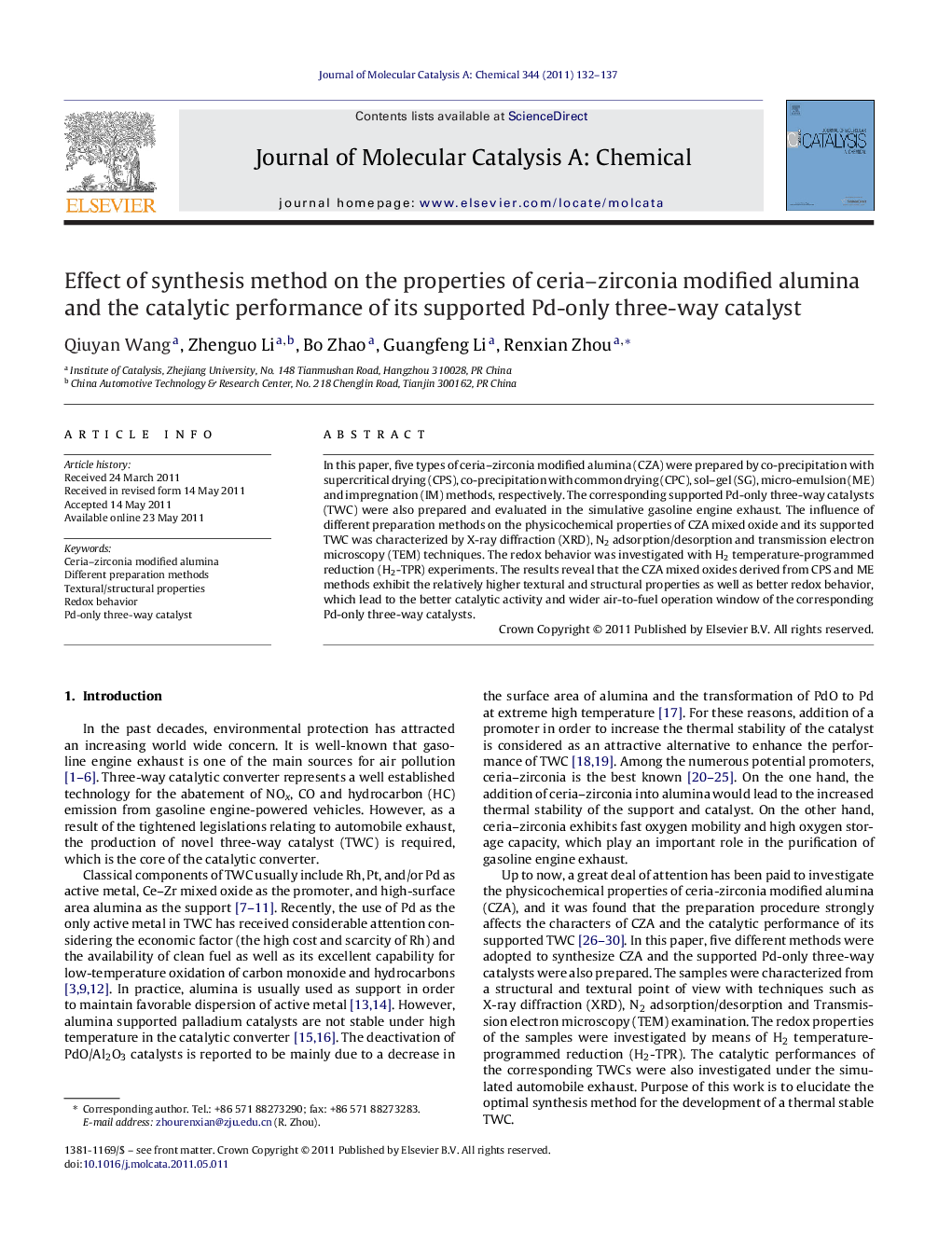| Article ID | Journal | Published Year | Pages | File Type |
|---|---|---|---|---|
| 66375 | Journal of Molecular Catalysis A: Chemical | 2011 | 6 Pages |
In this paper, five types of ceria–zirconia modified alumina (CZA) were prepared by co-precipitation with supercritical drying (CPS), co-precipitation with common drying (CPC), sol–gel (SG), micro-emulsion (ME) and impregnation (IM) methods, respectively. The corresponding supported Pd-only three-way catalysts (TWC) were also prepared and evaluated in the simulative gasoline engine exhaust. The influence of different preparation methods on the physicochemical properties of CZA mixed oxide and its supported TWC was characterized by X-ray diffraction (XRD), N2 adsorption/desorption and transmission electron microscopy (TEM) techniques. The redox behavior was investigated with H2 temperature-programmed reduction (H2-TPR) experiments. The results reveal that the CZA mixed oxides derived from CPS and ME methods exhibit the relatively higher textural and structural properties as well as better redox behavior, which lead to the better catalytic activity and wider air-to-fuel operation window of the corresponding Pd-only three-way catalysts.
Graphical abstractFigure optionsDownload full-size imageDownload high-quality image (114 K)Download as PowerPoint slideHighlights► The ceria–zirconia modified alumina (CZA) was prepared by five different methods. ► The effect of preparation methods on the structural properties of CZA was studied. ► Coprecipitation with supercritical drying leads to good thermal stability of CZA. ► The corresponding Pd-only three-way catalyst exhibits higher catalytic performance.
